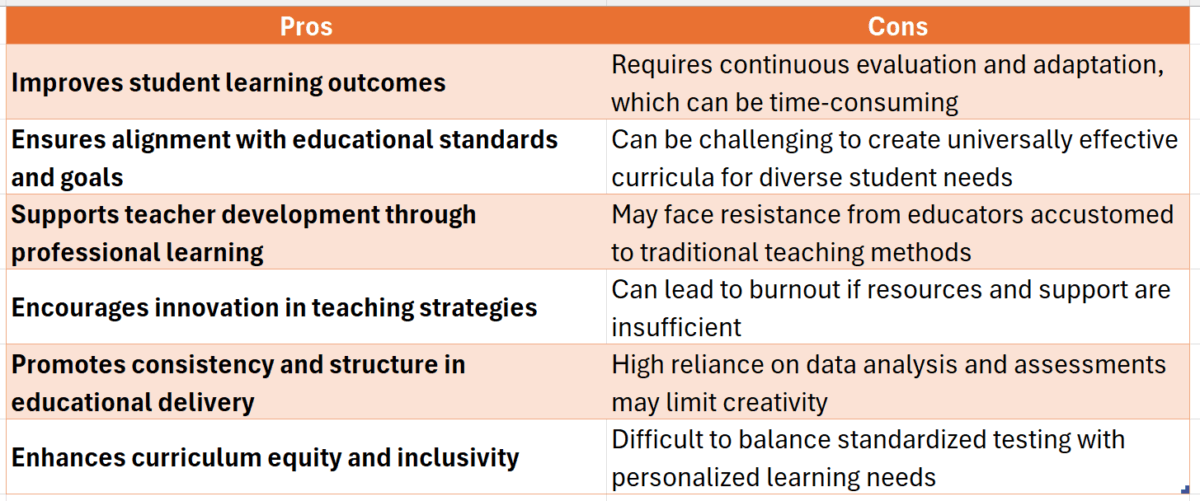
Curriculum and instruction are the backbone of any educational system. They shape how students learn and how teachers deliver lessons. Understanding their role is crucial because they directly influence classroom success. When designed effectively, they can engage students and foster a love for learning.
The Importance of Curriculum and Instruction
A well-structured curriculum outlines what students need to learn, while effective instruction focuses on how they learn it. Together, they create a roadmap for educational success. Here are some key points to consider:
- Curriculum and instruction guide teachers in delivering lessons.
- They ensure students meet learning standards.
- They adapt to different learning styles, making education more inclusive.
Community-Based Instruction
Community-based instruction is an exciting approach that connects classroom learning to real-world experiences. This method helps students apply what they learn in meaningful ways. For example:
- Students might visit local businesses to understand economics.
- They could participate in community service projects to learn about civic responsibility. This hands-on experience enhances understanding and retention, making learning more relevant and enjoyable.
Effective Teaching Strategies
To maximize the impact of curriculum and instruction, teachers can use various effective teaching strategies. These include:
- Interactive lessons that engage students.
- Group work to encourage collaboration.
- Technology integration to make learning fun and accessible.
By implementing these strategies, educators can create a dynamic classroom environment that promotes success for all students.
Study smarter, not harder—Enroll online today!
How Curriculum Design Influences Student Engagement

Curriculum and instruction play a vital role in shaping classroom success. When designed thoughtfully, they can ignite student engagement and foster a love for learning. This is especially important in today’s diverse classrooms, where effective teaching methods can make all the difference in a student’s educational journey.
A well-structured curriculum not only outlines what students need to learn but also how they will learn it. Here are some key ways it influences engagement:
- Relevance: Connecting lessons to real-life situations makes learning meaningful. For instance, community-based instruction allows students to apply their knowledge in their neighborhoods, enhancing their understanding and interest.
- Variety: Incorporating different teaching methods keeps lessons fresh. Using technology, group projects, and hands-on activities can cater to various learning styles, making every student feel included.
- Feedback: Regular assessments and constructive feedback help students understand their progress. This encourages them to take ownership of their learning, leading to greater motivation and engagement.
Effective teaching goes hand-in-hand with a well-designed curriculum. Teachers who adapt their instruction based on student needs can create a dynamic classroom environment. When students feel supported and challenged, they are more likely to participate actively, ask questions, and explore new ideas. In turn, this creates a vibrant learning community where everyone thrives.
What Are the Best Practices for Effective Instruction?
Curriculum and instruction are like the blueprint and the builders of a house. They shape how students learn and succeed in the classroom. When done right, they create an environment where every student can thrive. Understanding the best practices for effective instruction is key to unlocking this potential.
Best Practices for Effective Instruction
To ensure effective teaching, educators can follow several best practices that enhance learning experiences. Here are some important strategies:
- Engage Students Actively: Use interactive activities that encourage participation. This keeps students interested and helps them remember what they learn.
- Differentiate Instruction: Recognize that every student learns differently. Tailor lessons to meet various learning styles and needs, including community-based instruction that connects lessons to real-life situations.
- Set Clear Goals: Clearly defined objectives help students understand what they are expected to learn. This clarity can motivate them to achieve their goals.
- Provide Feedback: Regular feedback helps students understand their progress. Constructive criticism can guide them toward improvement and success.
By implementing these practices, teachers can create a supportive learning environment. This not only boosts academic achievement but also fosters a love for learning. Remember, effective teaching is not just about delivering content; it’s about inspiring students to engage with it.
The Impact of Curriculum and Instruction on Learning Outcomes
Curriculum and instruction play a vital role in shaping classroom success. They are the backbone of education, guiding teachers on what to teach and how to engage students. When done right, they can lead to improved learning outcomes and a more enriching experience for everyone involved.
Understanding Curriculum and Instruction
Curriculum refers to the content and skills students are expected to learn, while instruction is how teachers deliver that content. Together, they create a roadmap for effective teaching. A well-designed curriculum can spark curiosity and motivate students to explore new ideas.
Benefits of Community-Based Instruction
- Real-World Connections: Community-based instruction allows students to learn in real-life settings, making lessons more relevant.
- Engagement: Students often feel more engaged when they can see the practical applications of what they are learning.
- Skill Development: This approach helps students develop essential life skills, preparing them for future challenges.
In conclusion, effective teaching hinges on a strong curriculum and thoughtful instruction. When educators prioritize these elements, they set the stage for successful learning experiences that resonate with students long after they leave the classroom. By focusing on community-based instruction, teachers can further enhance these outcomes, making learning both meaningful and enjoyable.
Study smarter, not harder—Enroll online today!
Can Customized Curriculum Meet Diverse Student Needs?
Curriculum and instruction are the backbone of any classroom. They shape how students learn and how teachers teach. When designed thoughtfully, they can lead to remarkable classroom success. But what happens when students have different needs? This is where customized curriculum comes into play. It can be the key to unlocking each student’s potential.
Customized curriculum tailors learning experiences to fit individual student needs. This approach recognizes that not all students learn the same way. Here are some benefits of a customized curriculum:
- Addresses Different Learning Styles: Some students thrive with hands-on activities, while others prefer reading or visual aids. A customized curriculum can incorporate various teaching methods.
- Promotes Community-Based Instruction: By connecting lessons to real-life situations in the community, students can see the relevance of their education. This makes learning more engaging and meaningful.
- Supports Effective Teaching: When teachers have the tools to meet diverse needs, they can provide more effective instruction. This leads to better student outcomes and a more positive classroom environment.
In conclusion, a customized curriculum is essential for meeting the diverse needs of students. By focusing on individual strengths and interests, educators can create a more inclusive and successful learning experience.
Exploring Innovative Instructional Strategies for Classroom Success
Curriculum and instruction are like the backbone of a successful classroom. They guide teachers in what to teach and how to teach it, ensuring that students not only learn but thrive. When we talk about Classroom Success, we’re really discussing how these elements work together to create an engaging learning environment.
The Power of Community-Based Instruction
Community-based instruction is a fantastic way to connect classroom learning with real-world experiences. By taking lessons outside the classroom, students can see how their education applies to everyday life. This approach helps them understand the importance of what they’re learning, making it more relevant and exciting!
Effective Teaching Techniques
Effective teaching is all about using the right strategies to reach every student. Here are some innovative instructional strategies that can boost classroom success:
- Interactive Learning: Engaging students through discussions and group work.
- Technology Integration: Using tools like tablets and educational apps to enhance learning.
- Differentiated Instruction: Tailoring lessons to meet the diverse needs of students.
By implementing these strategies, teachers can create a dynamic classroom atmosphere that fosters growth and curiosity.
How Scholarship.Education Supports Educators in Enhancing Curriculum and Instruction
Curriculum and instruction are essential for classroom success, serving as the foundation for effective teaching. They guide educators on what to teach and how to engage students, creating an environment where all learners can thrive.
Tailored Resources for Every Classroom
At Scholarship.Education, we recognize that every classroom is unique. We provide resources that support community-based instruction, making lessons relatable and impactful. Educators can access customizable lesson plans tailored to diverse learning needs.
Professional Development Opportunities
We offer professional development workshops focused on effective teaching strategies. These sessions help educators refine their skills, enhancing their curriculum and instruction for better student outcomes.
Collaboration and Support
Scholarship.Education fosters a community of educators where teachers can share ideas and resources. This collaboration enriches teaching practices and builds a supportive network that encourages continuous improvement.
Engaging Learning Experiences
Engaging learning experiences are crucial for student success. By integrating technology and hands-on activities, educators can make curriculum and instruction dynamic, keeping students motivated and improving knowledge retention.
Emphasizing Real-World Connections
Connecting lessons to real-world scenarios is vital. Community-based instruction helps students see the relevance of their studies, increasing their investment in learning.
Continuous Feedback and Improvement
Feedback is essential for growth. We encourage educators to seek input from students and peers, refining curriculum and instruction to meet the needs of all learners effectively.
Study smarter, not harder—Enroll online today!
FAQs
1. What is curriculum and instruction?
Curriculum and instruction refers to the planning, design, and delivery of educational content in schools. It focuses on what is taught (curriculum) and how it is taught (instruction).
2. What are the key components of a curriculum?
A curriculum typically includes learning objectives, content, teaching methods, assessments, and instructional resources. It ensures that students acquire the necessary skills and knowledge.
3. How is curriculum developed?
Curriculum development is a collaborative process involving educators, administrators, and subject matter experts. It is informed by standards, student needs, and current educational research.
4. What is the role of an instructional designer?
An instructional designer creates learning experiences and materials to make content more engaging and effective. They focus on optimizing teaching methods and assessment strategies.
5. What is the difference between curriculum and instruction?
Curriculum is the content or subjects taught in schools, while instruction is the methods and strategies used to teach that content to students.
6. How do assessments relate to curriculum and instruction?
Assessments are tools used to measure whether students have achieved the learning objectives outlined in the curriculum. They help guide instruction and provide feedback for improvement.





